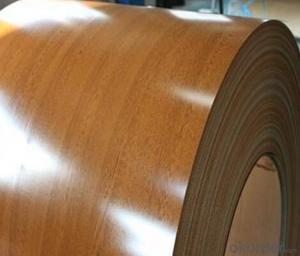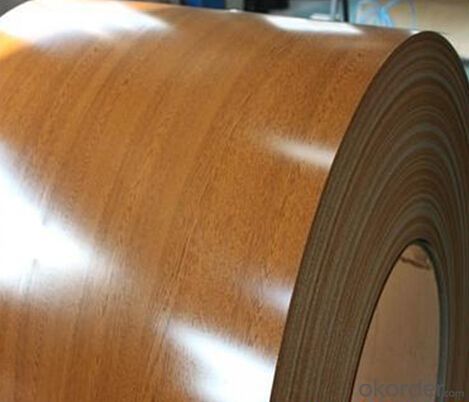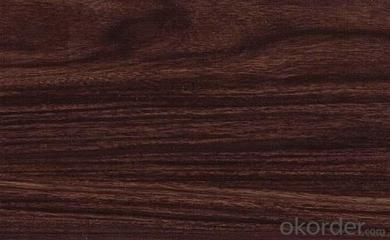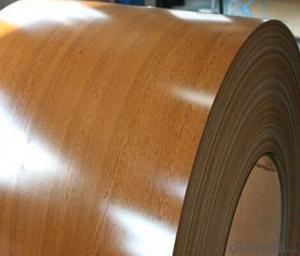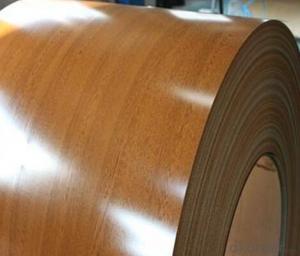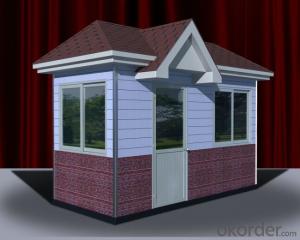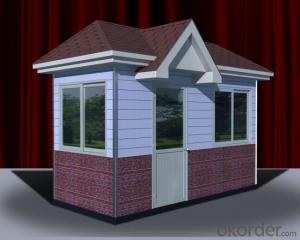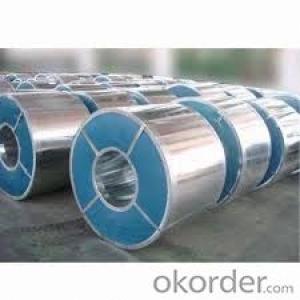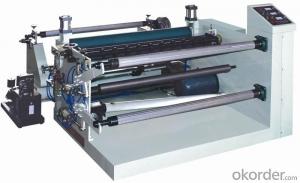Printing Steel of All Size and All Color
- Loading Port:
- China main port
- Payment Terms:
- TT OR LC
- Min Order Qty:
- 50 m.t.
- Supply Capability:
- 100000 m.t./month
OKorder Service Pledge
OKorder Financial Service
You Might Also Like
1. Description of the Printing Steel:
Printing steel plate is the product based on the metal sheet, of which surface is finally installed of the plastic film (PVC,PE) in addition to being firstly covered with the coating and printed ink in .The coated layer of printing steel plate consists of printing steel plate consists of chemical and filming layer, primer coated layer, pattern printed layer and surface coated layer. The top and back coating shall generally be the application of the weatherproof paint, as well can be the application of the paint with special capabilities such as stain-resistant, self cleaning capability, high thermal resistance, antistatic capability, sterilizing capability, finger-print prevention and etc.
2.Main Features of the the Printing Steel:
• High hot reflectance
• Good manufacturability
•Beautiful appearance
•Surface coating
•Cost-effective
3.Printing Steel Images
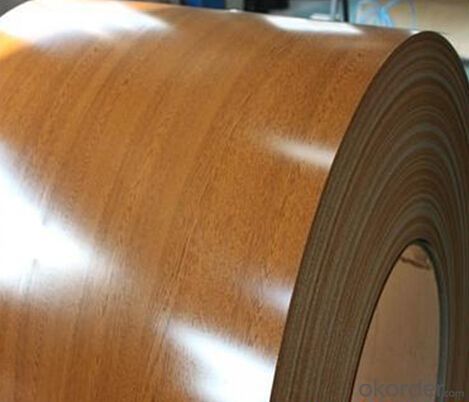
4.Printing Steel Specification
Available Specification
PRINTING STEEL | |
BASE MATERIAL | HDGI,ALUZINC,CR |
GRADE | SGCC,DX51D,ASTMA653,EN10142,S350GD |
THICKNESS | 0.20-0.80 mm |
WIDTH | 600-1250 mm |
ZINC COATING | 60-200 g/ m2 |
PAINT | PE,PVDF,SMP,HDP |
COILED | 508mm
|
COIL WEIGHT | 3-6 mt |
Main Test Standard
PRINTING STEEL | |
TBENDING | 0-3T |
PENCIL HARDNESS | ≥2H |
IMPACT | ≥9J |
MEK(TIME) | ≥100 |
SALT SPRAY | ≥720HR |
ACID STABILITY | Dip in 5%HCI liquor for 300hr,no bubble,no color change and no peel-off |
ALKALI RESISTANCE | Dip in 5% NaOH liquor for 300hr,no bubble,no color change and no peel-off |
5.FAQ of the Printing Steel
1.What advantages do your products have?
Firstly, our base material is of high quality, Their performance is in smooth and flat surface,no edge wave ,good flexibility.
Secondly, high quality zinc ingoats, 97.5% zinc,1.5% silicon,1% others, the same zinc coating measured by metal coating thickness or by zinc weight
Thirdly, high precision: Tolerance strictly according to ASTM or JISG standard even more rigid.
We have full stes of testing equipment(for t best, cupule,chromatism,salt spray resistance, etc) and professional engineers.
- Q: I'm writing a book, and there is a part where there is a death arena with a white-hot river of steel. How hot would that be?
- I had the Odyssey white steel # 5 and absolutly hated it. I gave it away. I didn't like the feel on lag putts. I now putt with a Scotty Cameron Circa 62 #2 and I love it. Would highly recommend a Scotty Cameron for anyone.
- Q: I live in Dubai. I want to make a damascus steel sword and have no idea where to get the steel or what sort of steel I should get.First to adress the access of my steel...I need to get some low carbon and high carbon steel for the Damascus....what sort of steel is recommended for this? Also where would I be able to get my hands on it (Internet options e.g websites or locations)THANKS
- You okorder
- Q: im buying a sword and i dont know if i should buy a cold steel sword or a normal sword and that i can some how make that cold steel
- What Is Cold Steel
- Q: I went to the store to get metal to make a knife and they had weldable steel and plate steel. Which one would be best/ which steels would be best for what i want to do?
- 'Plate' does not refer to a specific alloy. It simply describes the shape in which the metal is sold. Various steel alloys have varying degrees of weldability. Some weld well, with good strength. Others weld poorly, and crack or become very weak. Try looking up information on the specific alloy of steel.
- Q: How are steel coils used in the manufacturing of steel drums?
- Steel coils are used in the manufacturing of steel drums as they are cut into the desired size and shape to form the body of the drum. The coils are unrolled and bent into a cylindrical shape, which is then welded together to create a seamless drum. This process allows for efficient and cost-effective production of steel drums, ensuring durability and strength in the final product.
- Q: How are steel coils labeled for identification?
- Steel coils are typically labeled for identification using stickers or tags that contain information such as the coil number, dimensions, weight, grade, and other relevant details.
- Q: What are the different types of steel coatings for coil protection?
- There are several types of steel coatings for coil protection, including galvanized coatings, zinc coatings, aluminum coatings, and polymer coatings.
- Q: What are the different grades of steel used in coil production?
- There are several grades of steel used in coil production, including low carbon steel, high carbon steel, stainless steel, and galvanized steel. Each grade has its own unique properties and is chosen based on the specific requirements of the coil application.
- Q: I bought my Gerber Scout for 29 bucks at the local Walmart a couple months ago, and so far it's performed better than any of my previous knives (a couple of low quality Bucks, and a Winchester). However, my friend just bought a 50 dollar Buck knife and I absolutely love it, so I'm debating trading mine in and pitching in a bit of cash for the same kind.What troubles me is the fact that everybody seems to be bashing 440A steel. I hear a lot of bad things about it; how it is soft, chips easy, dull quickly, etc. How bad is 440A steel really, and would it be worth trading in my Gerber plus about 30 cash for a Buck Vantage Pro? Apparently the Vantage Pro uses S30V steel, so is it really that big of an upgrade, from 440A to S30V? Thank you.
- 440 steel is fine for most knives, but there are better quality steels out there for specialized uses. If you like the knife you have, don't worry about what other people say. If you like the new knife more, trade for it. Sometimes I question why people have to ask so many questions about what's better than what.
- Q: How are steel coils used in the manufacturing of construction bulldozers?
- Steel coils are used in the manufacturing of construction bulldozers primarily for their strength and durability. These coils are typically transformed into various components, such as the bulldozer's frame, blade, and tracks, which require robust materials to withstand the heavy-duty tasks and harsh operating conditions. The steel coils are processed and shaped into these parts, ensuring that the bulldozer can effectively push, lift, and carry heavy loads while enduring the rigors of construction sites.
Send your message to us
Printing Steel of All Size and All Color
- Loading Port:
- China main port
- Payment Terms:
- TT OR LC
- Min Order Qty:
- 50 m.t.
- Supply Capability:
- 100000 m.t./month
OKorder Service Pledge
OKorder Financial Service
Similar products
Hot products
Hot Searches
Related keywords
